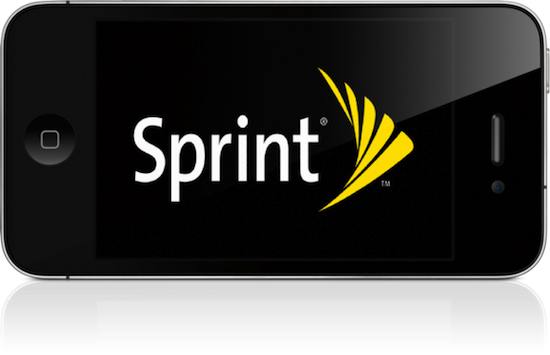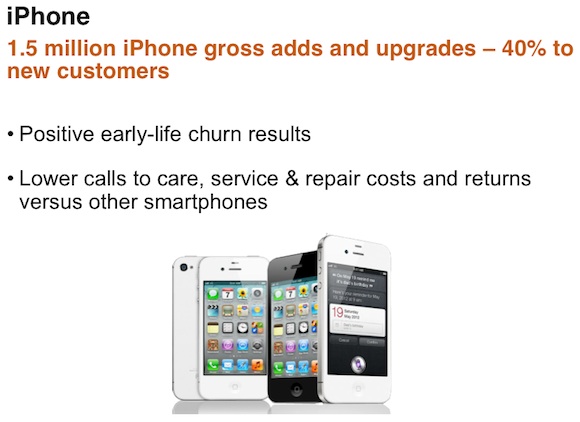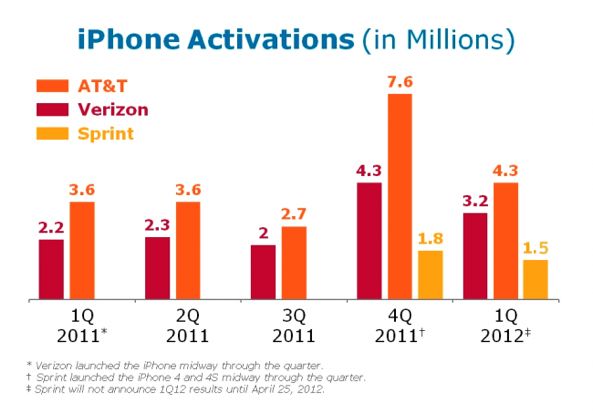U.S. carrier Sprint, the nation’s third-largest, announced its June quarter earnings today. The company reported no change in iPhone activations which remain steady at 1.5 million units, the same as in the March quarter. In this quarter, 40 percent of iPhones went to new customers versus 44 percent for the quarter-ago period. However, the company’s loss dropped from $863 million in Q1 2012 down to an operating loss of $629 million this quarter ($1.38 billion net loss), which was again partially blamed on high iPhone subsidy…
According to a media release:
The quarterly year-over-year increase in net subsidy is primarily due to the launch of the iPhone, which on average carries a higher subsidy rate per handset as compared to other handsets.
Sales expenses increased year-over-year primarily due to iPhone point-of-sale discounts (subsidy) for devices directly sold by the manufacturer to indirect dealers in which Sprint does not take device title.
The carrier also noted its Virgin Mobile USA brand began offering the iPhone to prepaid customers on June 29.
Also, this:
Sprint platform postpaid net additions of 442,000 improved by 68 percent sequentially driven by best ever quarterly churn performance of 1.69 percent, a Nextel postpaid recapture rate of 60 percent and the continued strength of iPhone sales. Sprint recorded nearly 1.5 million iPhone sales in the second quarter with 40 percent going to new postpaid customers.
Sprint’s iPhone activations growth actually beats AT&T’s and Verizon’s as both carriers reported a 15 percent sequential drop in iPhone activations, the fact Apple in its Q3 conference call attributed to the rumor-mill effect as people hold off buying the device as the next iPhone looms.
Chart via 9to5Mac
In another media release, Sprint announced its 4G LTE is coming to four new cities before Labor Day: Baltimore, MD, Gainesville, GA, Manhattan/Junction City, KS, Sherman-Denison, TX.
Sprint is the only major U.S. carrier to arrive late at the 4G party, having announced its LTE roll out in mid-June, beginning with five markets a month later.


